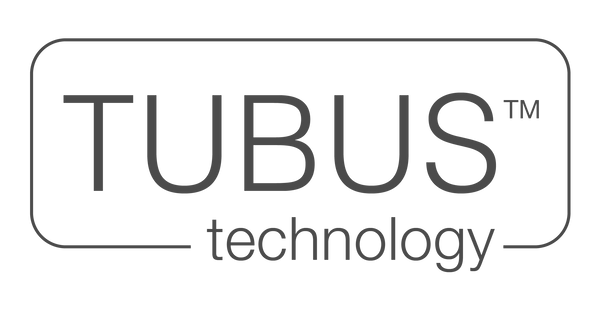HOW MEDICAL DEVICES CAN HELP PEOPLE WITH DISABILITIES BECOME MORE INDEPENDENT
At Tubus Technology we believe that all people should have the same opportunities. That includes opportunities online in an ever-evolving digital world. If you’re suffering from physical limitations in your upper limps you know that is difficult.
In this article we review some of the different diagnoses that cause paralyzation in arms and hands. Then we assess some of the assistive technologies available, and why our medical device, the TubusOne, can be your new mouse replacement, or serve as a supplement to what you’re already using. It’s about regaining your freedom when you’re using a smartphone, tablet or computer.
Amyotrophic lateral sclerosis (ALS): ALS affects nerve cells in the brain and spinal cord which causes loss of muscle control. Over time, muscles in the body becomes weaker, and problems with strength in the arms and legs arises while difficulty in in speaking and swallowing occur.
Multiple sclerosis (MS): MS is a disease in the central nervous system (CSN). CSN is made up of the brain and spinal cord. In MS the immune system attacks the so-called myelin sheaths that covers nerve fibers. As a result, signals from the brain to, for example, the eye muscles, arms, legs and bladder cannot register. It’s important to note that signs and symptoms of MS vary depending on the amount of nerve damage, and which nerves are affected.
Quadriplegia or tetraplegia: Two words for the same form of paralysis caused by damage to the spinal cord. Tetraplegia happens when damage to the spinal cord has occurred in the neck area - the higher up on the spinal cord the injury is the more areas of the body are affected. Suffering from tetraplegia means that arms, legs and torso are affected, and many are completely unable to move. Accidents like car crashes are a fairly common cause of tetraplegia.
Muscular dystrophy: Muscular dystrophy is not the name of one particular disease, but rather a common term for the group of diagnoses that cause progressive weakness and loss of muscle mass. The age at onset of symptoms, the severity of the disease, and which muscles are affected, varies. Some spend a lot of their life in a wheelchair, lose functionality in their arms and hands, while some never lose the ability to walk.

TubusOne: An easy-to-use solution
If you’re suffering from any of these kinds of diagnoses, you know it hinders your ability to communicate online, working on the computer and so forth. Maybe you’re used to having family, friends or a health care worker make phone calls for you or checking your emails. Or maybe you’re feeling monitored in your use of technology.
That’s why we’ve created the TubusOne. It’s essentially a mouthstick that consists of mouthpiece prolonged with a straw. It requires no software installation which makes it easy to use, and it also requires no head movement. TubusOne is all about minimizing the effort.
TubusOne works by a gentle blowing through the straw, and a piston is activated. A large lung capacity is not required. The piston then releases a tip with a touch function made of silver and woven fabric. The function is similar to a finger tapping or swiping across the touchscreen.
It should also be noted that TubusOne has a CE-marking, which shows it meets high safety, health and environmental protection requirements.
What can you use a TubusOne for?
Generally a mouthstick allows people suffering from ALS, MS, tetraplegia/quadriplegia or muscular dystrophy to do all the same things everybody else do on their smartphone or tablet. The TubusOne works on all touch screen devices, and everything you need to get started with using it, comes with the package you order. Here are some examples of what you can use the TubusOne for:
- It can be used as a typing aid. For example to write emails and answer messages
- Browse on the internet
- Working on the computer using Microsoft Office tools such as Word, Excel and PowerPoint
- Playing games to your amusement
- Handling doctor appointments online
- It can also function as a page turner, if you’re enjoying a good book on your device
Or else, you can watch this video where one our customers demonstrates how he uses his TubusOne, and how it makes his life easier.
Are there other medical devices I can use?
Of course, there are also other assistive technologies who can help people with disabilities. One of our customers, Christian Tiffert, uses a Bluetooth mouse built into his wheelchair so he can operate his computer via a mouth joystick. He also uses Dragon, a speech recognition software that allows you to speak into web pages, Word documents, Microsoft Outlook etcetera, and the software will then write what you say.
Instead of speaking, how about just looking? The Eyegaze Edge is a tablet that features a special tracking camera below the screen which observes the eyes of the user. A sophisticated image processing software then analyzes the camera’s image 60 times each second to determine what and where you’re looking at.
TubusOne can be a supplement aid
It’s important to note that communications devices for disabled isn’t a one-or-the-other type of situation. As Christian Tiffert, who studies Law and Good Governance at the University of Rostock, puts it:
“I can’t use speech recognition for taking notes and navigating when the professor is standing in front and wants to explain something. I can simply take my tablet and TubusOne with me into the lecture to switch different legal texts, take notes and so on. This is easy, fast and completely problem-free,” he says.
